Chelsea Tacchi
Advisor: Herbert Enns
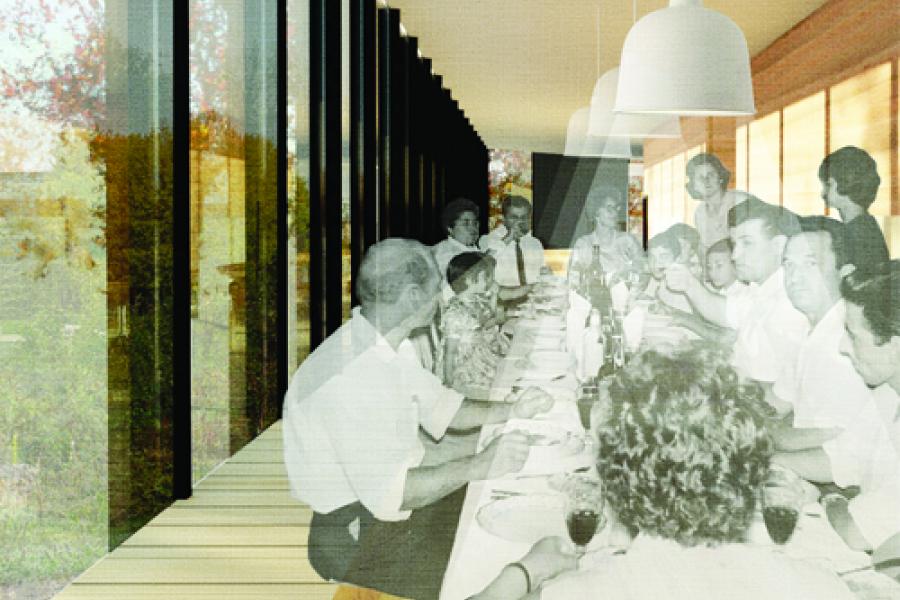

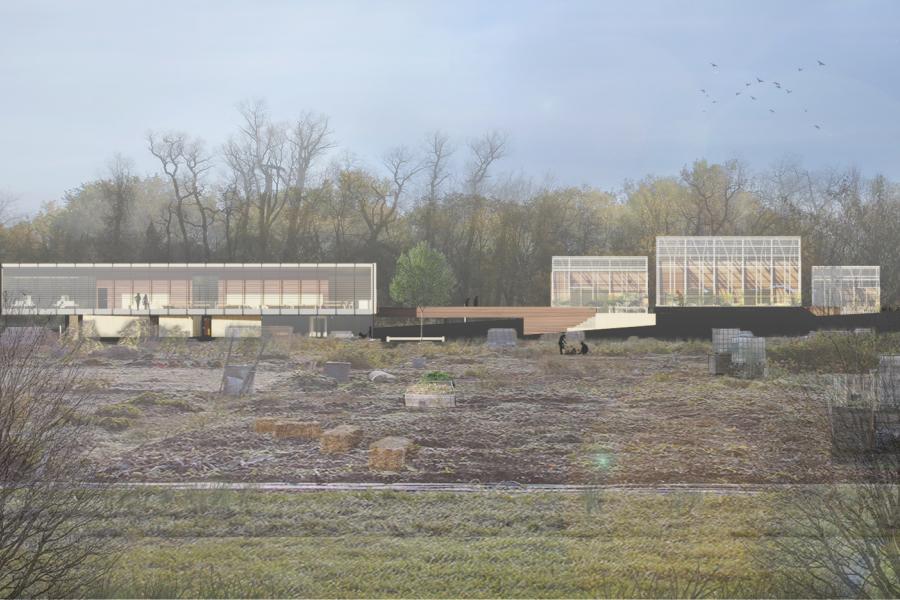
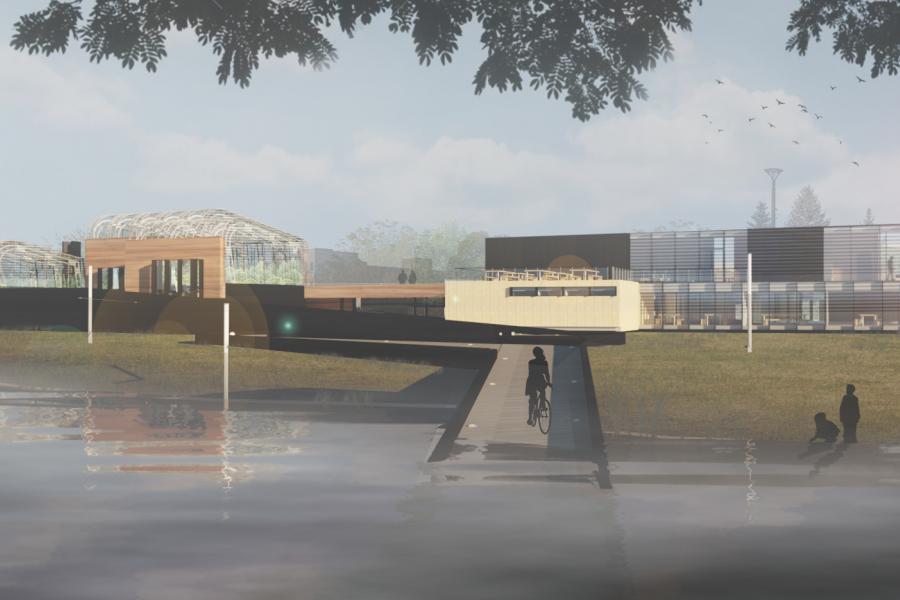
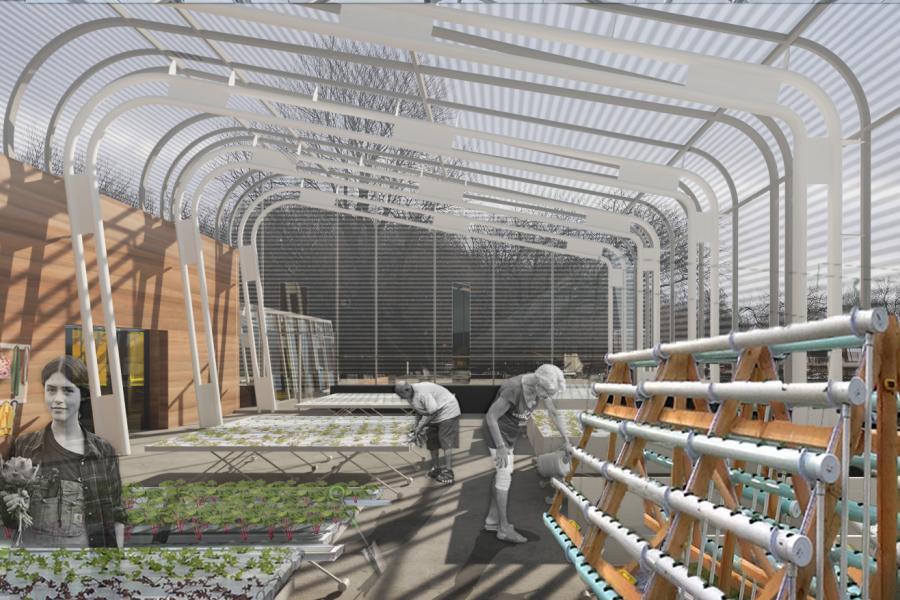
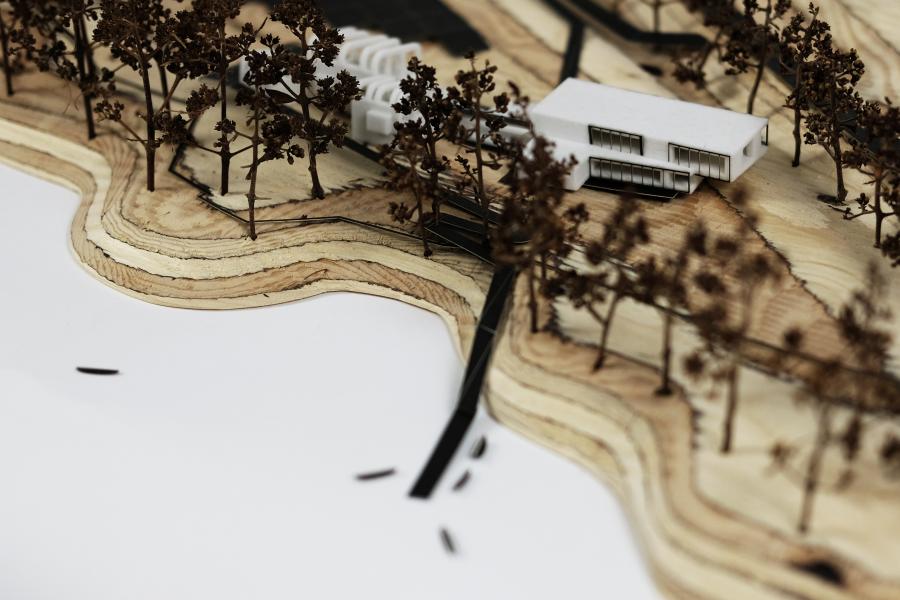
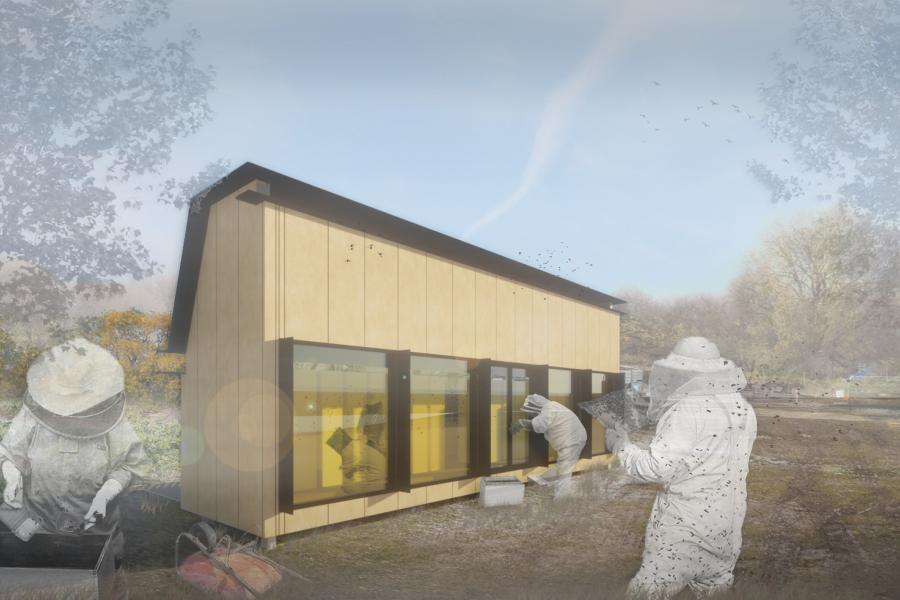
Reconnecting People, Land and Food:
Generating an Archetypal Model for a Substantial City-Wide Urban Agriculture Infrastructure in Winnipeg
Food is one of the most fundamental building blocks to human existence. The way we produce and consume food today has evolved greatly since our ancestors, who had mastered forging, hunting, and gathering. The evolution of our food system began with the infancy of agriculture over 10,000 years ago. Agriculture coupled with the Industrial Revolution, made humans sedentary, therefore no longer having to travel and follow migration patterns for food. This sense of stagnancy paired with a new energy-intensive food system that generates massive amounts of food, created some of the largest challenges humans and our Earth face today.1 In North America, humans live in a time of over-consumption, an abundance of food and waste, a dependence on manufacturing agencies, chemical intervention and a desire to be healthy. Grocery stores today are overflowing with options and misinform its consumers. Humans have struggled with their relationship with food for a long time and must begin to reconnect with people, land, and food.
As a reaction to the new food age movement, Winnipeg has begun to initiate its own social movement toward urban agriculture and permaculture— a diverse practice of growing food in and around cities and creating a resilient and ethical relationship between people, land, and systems. In Winnipeg, urban agriculture exists in various contexts, such as urban, suburban, prairie-urban and rural sites. Urban people are increasingly responding by growing food themselves through Urban Agriculture. Sustainable South Osborne is an organization for an urban neighbourhood in Winnipeg and currently uses local volunteers to help maintain and operate various community gardens in the neighbourhood for the neighbourhood. The majority of these gardens have issues with water access, proper land access and support from the city to validate these gardens being an integral part of our communities.
This design thesis will examine the conditions of urban agriculture in Winnipeg. The topic is inspired by a growing and profound desire amongst urban communities to achieve sustainable lifestyles within an integrated community and in pursuit of well-being and health. The intent is to design an architecture that will facilitate the resurgent desire to the land for local food production, based on the ethics of permaculture include Earth Care, People Care, and Fair Share.2 Riverview Garden located at Church Hill Drive and Baltimore Road provides a well-established site along the Red River to begin generating an archetypal model for a substantive city-wide urban agriculture infrastructure. The basis of the architectural research and design intervention will consider community impact & education, production & research initiatives and a retail component devoted to establishing high quality and locally sourced food supply to aid in promoting city-wide urban agriculture in Winnipeg. The intervention will have a sensitivity to the Earth, people, and the surrounding community and will have the intentions of being a resilient infrastructure, reinforcing the resilient nature of the Riverview Garden. People, land, and food should have a symbiotic relationship. This thesis will demonstrate to the City of Winnipeg the desire for a greater food quality and independent food production system by designing a vernacular that demonstrates a sustainable and environmentally sound urban land use pattern, supported by resilient energy management for promoting city-wide urban agriculture in Winnipeg.
1 Evan Bowness, “Canadian Dimension,” Food Systems in Transition: Globalized Industrial Agriculture to Localized Urban Permaculture, February 26, 2014, accessed October 03, 2018, Canadian Business & Current Affairs Database. Pg. 34
2 Christopher J. Rhodes, “Feeding and Healing the World: Through Regenerative Agriculture and Permaculture,” Science Progress 95, no. 4 (2012): doi:10.3184/0036a85012x13504990668392. Pg. 365.
